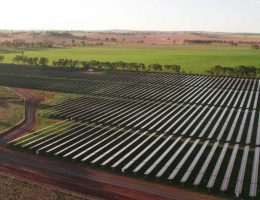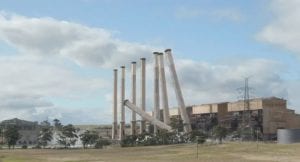The Emissions Reduction Fund (ERF) has secured its largest purchase of emissions abatement in almost three years, but it has not yet shaken off questions about the fund’s ability to deliver sufficient emissions cuts to meet the Morrison government’s 2030 targets.
Federal energy and emissions reduction minister Angus Taylor welcomed the auction result, with the 7 million tonnes of abatement purchased from 35 projects being four times larger than the volume purchased at the last ERF Auction, but still much lower than the first auctions in 2015. The average abatement price was $15.74 per tonne, the second highest in the program.
The volume of emissions reductions purchased by the Clean Energy Regulator through the ERF has diminished since the first auctions in 2015 as the pool of cheap emissions reduction projects was quickly drained. The first four auctions netted more than 177 million tonnes of emissions reduction, but the volume has fallen away dramatically due to a dearth of new projects.
Most of the projects securing contracts are set to undertake revegetation activities, with contracts also being secured by energy efficiency projects, and projects reducing emissions in the agricultural and waste sectors.
The Clean Energy Regulator has faced calls to offer higher contract prices under the ERF auction to attract new projects, but chair of the regulator David Parker welcomed the result, which he described as ‘great’ in the context of a Covid-19 disrupted economy.
“This is a great result particularly at a time when the economic impacts of COVID-19 are still very much with us demonstrating the resilience and vibrancy of the carbon market,” Parker said.
The Morrison government has allocated $2 billion to a Climate Solutions Fund to fund the purchase of greenhouse gas abatement under the ERF. The government indicated that it will aim to purchase 100 million tonnes of abatement using the fund by 2030, but recent auction results suggest the government may struggle to hit that target.
Across the last seven auctions held by the CER, held since April 2017, just 37.9 million tonnes of abatement has been secured. This has led to several abatement providers to call on the regulator to raise the price it is willing to pay for abatement at auctions, arguing that there are few opportunities available to reduce emissions at the $16 per tonne range being offered by the regulator.
“I have a legal obligation to purchase the most abatement for the lowest price. The significant volume of abatement under new contracts will be a real boost to the market, with more than 90 per cent of the $110 million committed funds flowing to regional and rural areas,” Parker added.
As a sign the federal government may be looking for other ways to use the funds allocated to the Emissions Reduction Fund, the Morrison government recently indicated that it will look to redirect funds allocated to the Climate Solutions Fund into projects outside of the Emissions Reduction Fund, as part of a larger shake-up of the Australian Renewable Energy Agency and the Clean Energy Finance Corporation.
Both agencies, which have been successful at driving the development of Australia’s clean energy sector, are set to be opened up to direct funding into gas and carbon capture and storage projects, with ARENA to be provided the ability to draw upon the Climate Solutions Fund.
The move has been met with wide ranging opposition, and has been seen as potentially compromising the work of two very successful clean energy funding bodies.
Taylor said that the changes were intended to support Australia’s existing industries, including the mining and resources sector.
“We’re also expanding the Australian Renewable Energy Agency (ARENA) and Clean Energy Finance Corporation’s (CEFC) investment toolkit so they can better support technologies that will increase farm output, like soil carbon,” Taylor added.
“This is all about supporting jobs and maintaining Australia’s position as a trusted supplier of food, fibre, energy and minerals to the world.”
The Climate Change Authority recently announced that it would undertake a review of the Emissions Reduction Fund, with an aim that includes improving the performance of the fund and identifying opportunities to increase participation.












